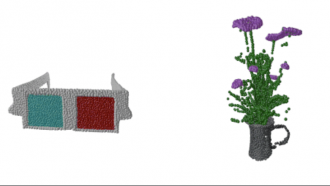Jupiter is composed of massive storms, and gazing inside them requires collective efforts of the Juno spacecraft, the Hubble Space Telescope, and the ground-based Gemini North telescope in Hawaii. Combined images from these sources have produced stunning images that exposed Jupiter's continuous storms.
TheCNN mentionedthree methods of observing Jupiter use different wavelengths to create images. Hubble utilizes visible and ultraviolet light while Gemini uses thermal infrared. Juno captures radio signals from the lightning in Jupiter's storms. Also called "sferics" and "whistlers," these radio signals can be used to map lightning even beneath Jupiter's heavy clouds.
Sferics is short for atmospherics, while whistlers are named from their whistling tone.
At a distance, Hubble and Gemini provide clear observations, which can interpret Juno's close-up views of Jupiter.
Jupiter's storms are monstrous with thunderhead clouds that can extend 40 miles from base to top, which is five times the height of Earth's thunderheads. Jupiter's lightning carries up to three times the energy of the most powerful lightning that strikes on Earth.
"Juno's microwave radiometer probes deep into the planet's atmosphere by detecting high-frequency radio waves that can penetrate through the thick cloud layers," senior scientist for planetary atmospheres research in the Solar System Exploration Division at NASA's Goddard Space Flight Center in Maryland said Amy Simon in astatement.
How much water does Jupiter have?
Three types of clouds come together in storms, including deepwater vapor clouds, huge convective towers of moist air like thunderhead clouds on Earth, and clear areas underneath due to dry air.
Lightning occurs in deep water clouds due to moist convection. Jupiter's lightning and large storms form both in and around large cells under deep, moist clouds.
“科学家追踪闪电,因为它是一个标记of convection, the turbulent mixing process that transports Jupiter's internal heat up to the visible cloud tops," the University of California, Berkeley planetary scientist Michael Wong said in a statement.
Texas-size cyclone discovered on Jupiter
Finding lightning in clouds can help researchers learn more about how much water is in the atmosphere of Jupiter. Understanding about the planet's atmosphere and water content can reveal how the planet was formed.
While unmanned space missions have already visited Jupiter, researchers still have many questions about how the giant gas was formed and processes that occur on the planet.
ALSO READ:Roaming Robot Dogs in Singapore Reminds Park Goers to Follow Social Distancing Rule
Both Hubble and Gemini's support also provide researchers a window into Jupiter's weather like wind patterns, atmospheric waves, and cyclones, as well as its gases and heat.
"This is our equivalent of a weather satellite," said Simon adding that they can finally start looking at weather cycles.
Jack-o-lantern Jupiter
The observation teamwork was also used to analyze Jupiter's most well-known storm called the Great Red Spot. Images of the on-going storm are sent back by Juno, and other missions have revealed dark features that evolve within the storm. However, researchers were not sure if features were caused by an actual dark material in the clouds or holes in the clouds showing layers below.
Combining Hubble's visible-light images of the storm with Gemini's infrared observations shows the dark holes in the cloud layer. In visible light, these appear dark, but in thermal infrared, researchers could see the holes revealing the brightness of Jupiter's heat escaping into space. Usually, this is blocked by Jupiter's massive clouds.
In infrared, Jupiter's warm layers deep under the clouds appear to glow through cloud gaps.
"It's kind of like a jack-o-lantern," Wong said. He also noted this bright infrared light comes from cloud-free parts, "where there are clouds, it's dark in the infrared."
Great Red Spot's secrets
The varying wavelength on Jupiter's Great Red Spot's images reveals its secrets.
Using "lucky imaging," many short-exposure, sharp images are taken when Earth's atmosphere is momentarily stable. This created the sharpest images of Jupiter taken from Earth. "These images rival the view from space," said Wong.
At 300-mile resolution, the Gemini's telescope can even explain the two car headlights in Miami that were seen from New York City,













